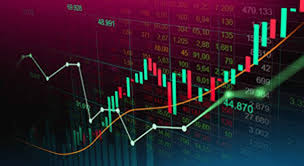
Automated trading has revolutionized the Forex market, transforming how traders execute their strategies. With the ability to remove emotional decision-making and enhance the speed of transactions, automated trading systems are increasingly popular among both novice and experienced traders. A significant player in this space is automated trading forex Online Trading CM, which offers comprehensive tools and resources for those venturing into automated Forex trading.
Understanding Automated Trading in Forex
Automated trading refers to the use of computer algorithms to execute trades based on predefined criteria. These systems analyze various market indicators and execute trades at speeds unattainable for human traders. This transition towards automation allows for high-frequency trading, where hundreds or thousands of trades can occur in mere seconds.
The Benefits of Automated Trading
One of the primary advantages of automated trading systems is the elimination of emotional interference. Traders often fall victim to their emotions, leading to poor decisions during volatile market conditions. An automated system follows a set strategy without the influence of fear or greed.

Additionally, automated trading can improve consistency and discipline. By following a programmed strategy, traders can ensure that they stick to their rules, which enhances their overall performance. Finally, automated systems can monitor the market around the clock, allowing traders to seize opportunities as they arise, regardless of their physical availability.
Types of Automated Trading Systems
There are several types of automated trading systems employed in the Forex market, each catering to different trading styles and objectives:
- Expert Advisors (EAs): Popular in MetaTrader platforms, EAs are scripts that automate trading strategies based on specific indicators and conditions.
- Algorithmic Trading: Utilizes complex mathematical models and formulas to make trading decisions based on market data.
- Copy Trading: Allows traders to replicate the trades of successful investors automatically.
- High-Frequency Trading (HFT): Involves executing a large number of orders at extremely fast speeds, often leveraging price discrepancies that exist for mere milliseconds.
Developing an Automated Trading Strategy
Creating a successful automated trading strategy involves several steps:
- Define the Trading Strategy: Start by determining the trading style, such as scalping, day trading, or swing trading, along with criteria like entry and exit points and risk tolerance.
- Select Indicators: Choose technical indicators that your strategy will employ. Common choices include moving averages, RSI (Relative Strength Index), and MACD (Moving Average Convergence Divergence).
- Backtesting: Test the strategy on historical data to evaluate its performance. This allows traders to identify potential flaws and make necessary adjustments.
- Implement Risk Management: Establish rules to protect your capital, including stop losses and take profit levels, ensuring that no single trade significantly harms your portfolio.
- Continuous Monitoring and Optimization: After deployment, continuously monitor the system’s performance and make adjustments to adapt to changing market conditions.

Challenges in Automated Trading
Despite the myriad of benefits, automated trading is not without its challenges:
- Technical Failures: Dependence on technology means that system crashes, internet issues, or power outages can lead to significant losses.
- Over-Optimization: Tweaking a strategy to perform flawlessly on historical data can lead to poor performance in real-time trading, a phenomenon known as overfitting.
- Market Changes: Strategies that perform well in one market condition may struggle in another, necessitating ongoing adjustments to the strategy.
Choosing the Right Platform for Automated Trading
To engage in automated Forex trading, selecting the right trading platform is crucial. Factors to consider include:
- Ease of Use: Ensure the platform is user-friendly, particularly if you’re new to automated trading.
- Customization Options: Look for platforms that offer customizable features, allowing you to tailor your automated systems to fit your strategy.
- Support and Resources: Choose a platform that provides ample resources, including tutorials, help documentation, and customer support.
- Security and Reliability: Ensure the platform has a strong reputation for security and reliability to protect your investments.
Conclusion
Automated trading in Forex presents an exciting opportunity for traders looking to enhance their efficiency and effectiveness in the market. By leveraging the power of technology, traders can execute their strategies with precision and discipline. However, it’s essential to approach automated trading with a clear understanding of the inherent challenges and remain committed to ongoing learning and adaptation. With the right tools, such as those provided by Online Trading CM, you can position yourself for success in the dynamic world of automated Forex trading.
